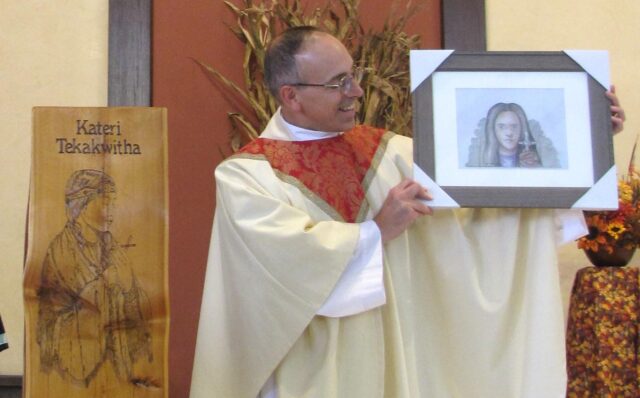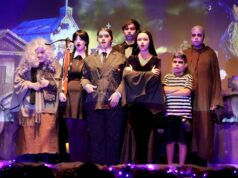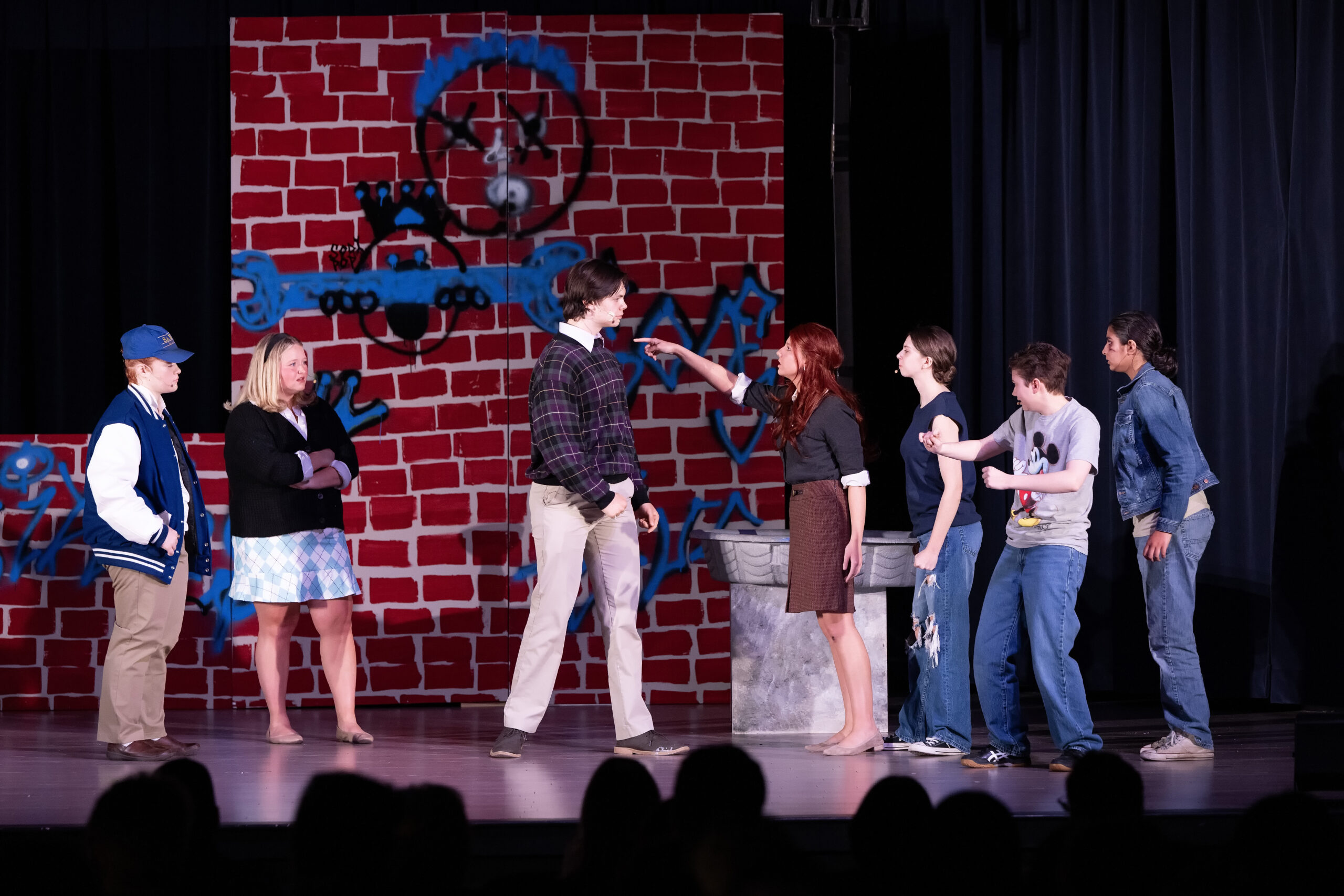LEWES — St. Jude the Apostle parish hosted a Native American Liturgy and Celebration on Sunday, Oct. 29.
Bells were replaced with drums. Incense was replaced with sage. A Diocesan Native American choir led the congregation in song and praise.
The Mass was said in commemoration of the 11th anniversary of the Canonization of Saint Kateri Tekakwitha, a Native American Mohawk and Algonquin who converted to Christianity in the 1600s. She was born around 1656 and died in 1680.
Several local Native Americans participated, bringing the gifts, cantoring and leading the congregation in prayer. While a celebration of Saint Kateri, the Mass was also seen as an example of unity and cultural inclusion. Strains of Cherokee and Mohawk could be heard and the areas near the altar and the podiums were filled with items important to her culture like drums, flutes and a basket of the “three sisters” crops of squash, corn and beans.
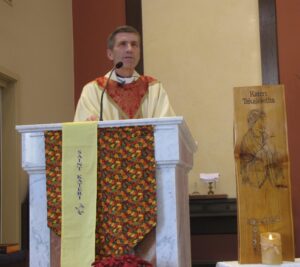
Bishop Koenig presided, telling the audience about the young woman’s life. As a young girl of about four, her parents and brother were killed by smallpox. The disease left her scarred and took away much of her vision. She was raised by an uncle and decided to convert to Christianity and remain a virgin. Her name translates to “the one who walks by groping,” a reference to her inability to see well.
He spoke of the Native American tradition of love of the natural world and her ability to see God in the beauty of his creation around her. While physically difficult for her to see, she could see perfectly with her spiritual sight.
The bishop described her as “one who saw God’s splendor.”
St. Jude’s Pastor Father Brian Lewis said the Mass celebrated the unity of all peoples, noting that “we may not all speak the same language, but we were all speaking the language of charity, faith, hope and salvation.”
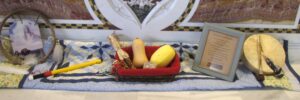
She was beatified in 1980 by Pope John Paul II and canonized by Pope Benedict XVI at Saint Peter’s Basilica in 2012.”
Saint Kateri is described as the patron saint of Native Americans, the environment, those who have lost their parents, young people, those in exile and those who are ridiculed for their piety.
The prelude, cantered by Gail Rando, of Cherokee descent, was the Cherokee Morning Song “Winadayaho.” It translates generally to “We greet the Lord as we face the East; offer our prayer of gratitude for coming through the night, ask blessing to walk a good path during the day, according to His plan. We say AHo – we affirm this. Ya – yes, this is so.”
A prayer to the six directions (north, south, east, west, heaven and earth) was led by Dana Marie Crumety and Pat Sutton. Parishioners turned and faced the different directions as the prayer was led. The prayer to the heavens says “Help us to remember that you are our Creator God. Let all that is in the earth lift our minds, our hearts and our lives to you, so that we may come to you always in truth with a good mind and clean heart.”
The Earth portion of that prayer said “We greet you, Spirit of the Lord, giver of all life. We pray to you from the earth. Help us, Dear God, to remember that we are small and need you. Help us to be thankful for the gifts of the earth. May we walk gently and softly on this land of the First Peoples. Bless us with the eyes to love all that comes from you.”
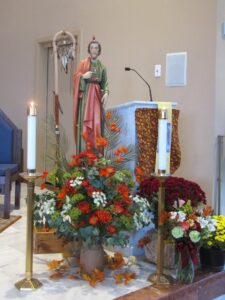
Gifts placed near the altar included a star quilt, the Native ten commandments, rosary and prayer ties, a three sisters’ basket, a drum and flute and a Cherokee artist’s rendition of God. The rendition of God was described in the bulletin as “The native represents God, the father. The buffalo represents Jesus, God the son as our Savior, who gave his all for us, as the buffalo gives its life to sustain the people. The eagle represents the Holy Spirit who sanctifies us.”
Flowers represented lilies and sunflowers, according to the church bulletin. They included sunflowers because Saint Kateri’s father called her sunshine and lilies because she was called “The Lily of the Mohawks” at the St. Francis Mission near Montreal because of her kindness, prayerfulness, faith and heroic suffering.
John Rando, an adopted Cherokee whose Native American name is Guardian Bear, said after the Mass that there is a strong historical bond between Native Americans and African Americans as oppressed people’s. “We are all related,” he said. “All God’s creations are sacred.”
“May you know of our esteem,” said Bishop Koenig at the conclusion of Mass, in reference to Native American people. “They are in many ways, the soul of this country.”


